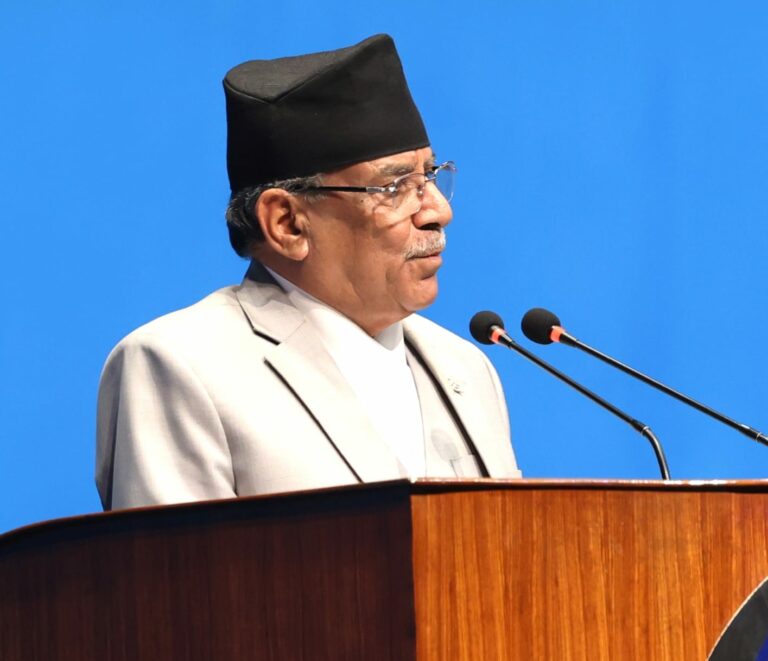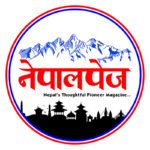With shifting alliances, elastic ideologies of political parties, and personal ambitions of leaders, political instability continues to plague Nepal. In the last two years alone, coalitions have mutated several times. From a Maoistcommunist Party of Nepal (Unified Marxist–Leninist) coalition to a Maoistnepali Congress (NC) coalition and back to a Maoist-CPN(UML) coalition, the wheel has moved a full circle.
Even though the NC had emerged as the single largest party in the last elections held in November 2022, the Maoists, who were a distant third (a mere 32 seats in a house with 275 members), held the balance of power. Neither the NC nor the UML, which was the second largest party, had the numbers to form a government on their own.
The price that Pushpa Kamal Dahal (Prachanda) claimed for extending support was the office of the prime minister: The two largest parties played second fiddle in the respective coalitions. When difficulties arose with one coalition partner, Prachanda nimbly jumped ship and forged a new coalition with the other. This is the game being played out today. The Maoist-nc coalition that collapsed just the other day floundered for several reasons.

First, at a time when the economy was stagnant and the government was receiving public flak, Prachanda was unable to remove some non-performing ministers due to the intransigence of the NC leadership.
Second, the NC, even while being in the coalition, decided that they would fight future elections on their own and not in alliance with another party. For the Maoists, this was deeply worrisome, given the fact that grassroots support for them has diminished over the years; the possibility of being wiped out if they fought on their own, stares them in the face.
Third, there is the everpresent fear amongst the Maoists that they would be completely marginalised if the big two parties came together, something not impossible as witnessed following the 2013 Parliament elections; a hint of this was visible when the NC and CPN (UML) collaborated to win the chief ministerial position in the Kosi province against a Maoist candidate.
Fourth, the Maoists are deeply suspicious of efforts underway especially by the monarchist, pro-hindu rashtra outfit, the Rastriya Prajatantra Party (RPP), with support from some sections of the NC, to reopen key features such as secularism and republicanism of the new Constitution. There is also a
perception in Nepal that some of these initiatives have the backing of India or at least some sections of society that are close to the ruling establishment in India. Recent communal disturbances in the Terai are a new phenomenon and have caused considerable anxiety in Nepal. Maoists fear that reopening one key element of the Constitution would lead to calls for reopening others such as federalism; this would again plunge the country into turmoil. Interestingly, the RPP, which was also in the opposition, has not been included in the new coalition.
Fifth, relations between coalition partners deteriorated when Prachanda refused to support an NC candidate for the post of the chair of the Upper House, who is also a member of the Constitutional Council that recommends nominations to several constitutional positions.
Lastly, and this has been publicly stated by the Maoists, this new coalition is inspired by a desire to once again bring all the Left parties on a common platform. A merger of the Maoists and the CPN (UML) some years ago with the blessings of Beijing had collapsed due to interpersonal differences between the leaders. The Chinese have been making assiduous efforts to revive such an alliance. This is now bearing fruit. Even if this development is internal to Nepal, it is certainly a step in the direction of the Chinese goal of
uniting all left parties.
India has traditionally felt more comfortable dealing with a government that includes democratic parties such as the NC that have a historical association with India and our freedom movement. A Left-oriented government in 2015 headed by Prime Minister KP Sharma Oli signed long-term agreements with China relating to trade and transit. Left governments have been enthusiastic supporters of China’s Belt and Road Initiative, even though no significant projects have materialised in the absence of agreement on funding modalities. A NC government had decided that such projects should only be funded on the basis of grants or concessional loans. It remains to be seen whether the new Left coalition would alter this policy. One major partner in the coalition is the Rastriya Swatantra Party (RSP). It made a spectacular debut in the last elections when it emerged as the fourth largest party. It is largely comprised of urban, well-educated, hill elite. The strong showing of the RSP represents a desire amongst the Nepalese electorate for a change from the business-as-usual approach of the established parties. Though the party does not have a clear ideological stance and comprises technocrats who have excelled in their respective fields, it is now part of the hurly-burly of the political process and has to come to terms with the realities of Nepal, both domestic and regional. The party leaders have made an outreach to India. They realise the significance of good relations with India for Nepal to achieve economic prosperity. They can potentially be a
moderating influence within the new Left-oriented coalition. It is imperative for India to reach out to this new political force including by providing them access to our leaders. Though it is foolhardy to
make any prediction, given the fact that the NC is factionridden and in turmoil, the RSP could emerge as an even more significant force in the next elections supporters of China’s Belt and Road Initiative, even though no significant projects have materialised in the absence of agreement on funding modalities. A NC government had decided that such projects should only be funded on the basis of grants or concessional loans. It remains to be seen whether the new Left coalition would alter this policy.
One major partner in the coalition is the Rastriya Swatantra Party (RSP). It made a spectacular debut in the last elections when it emerged as the fourth largest party. It is largely comprised of urban, well-educated, hill elite. The strong showing of the RSP represents a desire amongst the Nepalese electorate for a change from the business-as-usual approach of the established parties. Though the party does not have a clear ideological stance and comprises technocrats who have excelled in their respective fields, it is now part of the hurly-burly of the political process and has to come to terms with the realities of Nepal, both domestic and regional. The party leaders have made an outreach to India. They realise the significance of good relations with India for Nepal to achieve economic prosperity. They can potentially be a moderating influence within the new Left-oriented coalition. It is imperative for India to reach out to this new political force including by providing them access to our leaders. Though it is foolhardy to make any prediction, given the fact that the NC is factionridden and in turmoil, the RSP could emerge as an even more significant force in the next elections.
Excerpts: Hindustan Times March 7, 2024,
Mr Rae is a Former Indian Ambassador to Nepal .




COMMENTS